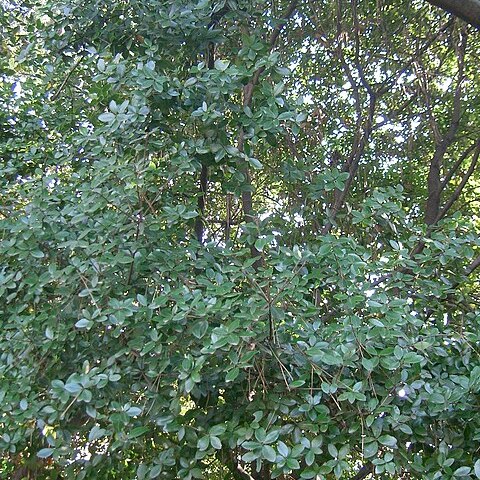A shrub or tree. It grows up to 10 m tall. It keeps its leaves throughout the year. The small branches are slender, greyish brown and hairy. The leaf stalk is 3-5 mm. The leaf blade is green and oval. It is 2-6 cm long by 1.5-3 cm wide. The base is rounded or heart shaped. The edges have teeth. The tip can be sharp. There are 8-13 secondary veins on each side of the main vein. The female flowering stalk is 1-4 cm long. The cup encloses about 1/2 or the nut. The nut is oval and 1-2 cm long by 0.5-1 cm wide. The cup is like an upside-down cone.


